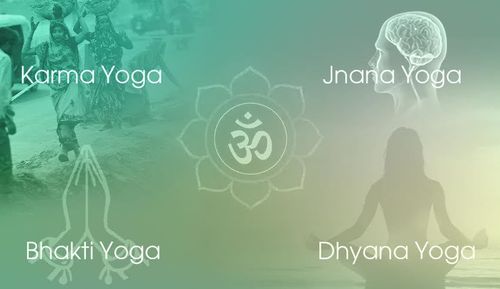Nārāyaṇa
In a world filled with diverse spiritual paths and practices, many seek peace, liberation, and self-realization through different systems of yoga, meditation, austerity, and knowledge. Yet, the Śrīmad-Bhāgavatam reveals an eternal truth: all authentic paths of yoga and spiritual discipline ultimately lead to Nārāyaṇa, the Supreme Personality of Godhead.
This universal principle is beautifully stated in the Śrīmad-Bhāgavatam (2.5.16):
nārāyaṇa-paro yogo
nārāyaṇa-paraṁ tapaḥ
nārāyaṇa-paraṁ jñānaṁ
nārāyaṇa-parā gatiḥ
“All different types of meditation or mysticism are means for realizing Nārāyaṇa. All austerities are aimed at achieving Nārāyaṇa. The culture of transcendental knowledge is for getting a glimpse of Nārāyaṇa, and ultimately, salvation is entering the kingdom of Nārāyaṇa.”
This verse emphasizes that yoga, austerity, knowledge, and the pursuit of liberation are only perfected when they culminate in devotion to Nārāyaṇa (Krishna).
Understanding Different Yoga Systems and Their Connection to Nārāyaṇa
In the Vedic tradition, yoga means “to link” or “to connect.” The ultimate goal of every yoga system is to reconnect the soul (jīvātmā) with the Supreme Soul (Paramātmā), Nārāyaṇa. However, various forms of yoga offer different approaches toward this goal.
1. Karma-Yoga – The Yoga of Selfless Action
In Karma-yoga, one performs their prescribed duties without attachment to results, offering the fruits of labor to Krishna. It purifies the heart and gradually leads the practitioner to bhakti (devotion).
“yat karoṣi yad aśnāsi yaj juhoṣi dadāsi yat
yat tapasyasi kaunteya tat kuruṣva mad-arpaṇam”
“Whatever you do, whatever you eat, whatever you offer or give away, and whatever austerity you perform—do that as an offering to Me.” (Bhagavad-gītā 9.27)
2. Jñāna-Yoga – The Yoga of Knowledge
This path involves studying scriptures and discriminating between the eternal soul and temporary matter. However, knowledge without devotion remains incomplete. The highest knowledge is understanding Krishna as the source of everything.
“bahūnāṁ janmanām ante jñānavān māṁ prapadyate”
“After many lifetimes of cultivating knowledge, the wise surrender to Me, understanding that I am the cause of all causes.” (Bhagavad-gītā 7.19)
3. Dhyāna-Yoga – The Yoga of Meditation
Dhyāna-yoga focuses on meditating on the Lord within the heart. Practitioners fix their mind on the Paramātmā (Krishna in the heart), gradually leading to direct perception of the Lord.
“dhārayen manasācāryaṁ”
“With a steady mind, meditate upon the Supreme Person.” (Bhagavad-gītā 6.13)
4. Aṣṭāṅga-Yoga – The Eightfold Path of Yoga
This rigorous practice involves ethical disciplines, breath control, sense withdrawal, and meditation. However, Krishna reveals that even among yogis, the greatest is one who meditates on Him with devotion.
“yoginām api sarveṣāṁ mad-gatenāntar-ātmanā”
“Of all yogis, the one who always thinks of Me within himself with great faith is the highest.” (Bhagavad-gītā 6.47)
5. Bhakti-Yoga – The Yoga of Devotion
Bhakti-yoga is the direct and most effective path to realizing Nārāyaṇa. It involves lovingly serving Krishna through chanting, hearing, worship, and offering everything to Him.
“bhaktyā mām abhijānāti yāvān yaś cāsmi tattvataḥ”
“Only by devotional service can one understand Me as I am.” (Bhagavad-gītā 18.55)
Bhakti-yoga is the culmination of all yoga systems because it focuses directly on Krishna without the need for gradual elevation.
The Purpose of Austerities and Knowledge
All forms of austerity (tapasya) and transcendental knowledge (jñāna) are meant to awaken our dormant relationship with Krishna. Austerities purify the heart, making it a suitable place for Krishna to reside.
Śrīla Prabhupāda explains that austerity without the aim of pleasing Krishna is merely self-inflicted hardship. Similarly, knowledge that does not lead to Krishna is dry speculation.
“vedaiś ca sarvair aham eva vedyaḥ”
“By all the Vedas, I am to be known.” (Bhagavad-gītā 15.15)
Thus, all true knowledge must ultimately lead to surrender and devotion to Nārāyaṇa.
Liberation (Mokṣa) Is Entering Krishna’s Abode
Many spiritual seekers desire liberation (mokṣa), believing it to be freedom from suffering. However, Krishna teaches that merging into the impersonal Brahman is incomplete. Real liberation is entering Krishna’s eternal abode and serving Him in bliss and love.
“mām upetya tu kaunteya duḥkhālayam aśāśvatam”
“Having attained Me, the great souls never return to this temporary world.” (Bhagavad-gītā 8.15)
This is the true destination (gati) of all spiritual paths.
Case Study: King Janaka – The Perfect Karma-Yogi
King Janaka, a great emperor, exemplified how karma-yoga leads to Krishna. Though ruling a vast kingdom, he performed his duties without attachment and always meditated on Krishna. His life teaches that one can be engaged in worldly duties while remaining deeply connected with Nārāyaṇa.
Krishna Himself praised Janaka in the Bhagavad-gītā:
“karmaṇaiva hi saṁsiddhim āsthitā janakādayaḥ”
“By performing duties, King Janaka and others attained perfection.” (Bhagavad-gītā 3.20)
Janaka’s selfless service and devotion illustrate how all paths converge in Krishna.
Case Study: The Story of Śrī Dhruva Mahārāja
The story of Dhruva Mahārāja from the Śrīmad-Bhāgavatam perfectly illustrates how austerity, meditation, and knowledge lead to Krishna when properly directed.
As a young boy, Dhruva sought a kingdom greater than that of his father. Guided by the sage Nārada Muni, he undertook severe austerities and focused his meditation on Lord Vishnu (Nārāyaṇa). His penance was so intense that it shook the universe, compelling Lord Vishnu to personally appear before him.
Upon seeing the Lord, Dhruva’s heart transformed. His material desires vanished, and he humbly prayed:
“I was searching for broken pieces of glass, but I have found a rare diamond.”
Dhruva’s journey shows that yoga (meditation), tapa (austerity), and jñāna (knowledge) are perfected only when they culminate in devotion to Krishna.
The Futility of Detached Practices
Without Krishna at the center, even the most disciplined spiritual practices are incomplete. The Bhagavad-gita warns against performing rituals and austerities for personal gain or recognition.
“avidhi-pūrvakaṁ”
“Worship not directed to Krishna is unauthorized and ultimately fruitless.” (Bhagavad-gita 9.23)*
For example, some yogis perform meditation merely for mystic powers (siddhis), and scholars accumulate knowledge for intellectual pride. These pursuits are temporary and often reinforce the false ego.
Only by directing these practices toward Krishna can they lead to lasting peace and fulfillment.
The Highest Yoga in Kali-yuga: Saṅkīrtana-Yajña
In this Age of Kali, complex yoga systems and severe austerities are difficult to perform. Recognizing this, Krishna has given a simple, accessible path: the chanting of His holy names.
“harer nāma harer nāma harer nāmaiva kevalam”
“In this age of quarrel and hypocrisy, the only means of deliverance is chanting the holy name of the Lord.” (Bṛhan-Nāradīya Purāṇa)
The saṅkīrtana-yajña (congregational chanting of Krishna’s names) is the recommended sacrifice in this age. It is both the easiest and most powerful way to focus the mind on Nārāyaṇa.
How to Align Our Practices with Krishna
- Redirect Meditation to Krishna
Instead of meditating on impersonal voids or mundane goals, meditate on Krishna’s form, pastimes, and qualities. Visualize His beautiful form and offer prayers. - Perform Austerities with Devotion
Simple acts like fasting on Ekādaśī, rising early for maṅgala-ārati, and following the four regulative principles are powerful austerities when done to please Krishna. - Seek Knowledge That Glorifies Krishna
Study the Bhagavad-gita, Śrīmad-Bhāgavatam, and other Vedic texts that deepen your understanding of Krishna. Avoid speculative or impersonal knowledge. - Desire the Ultimate Goal—Krishna’s Abode
Aspire not just for liberation but for the joy of serving Krishna eternally in His spiritual world.
Call to Action: Make Krishna the Goal of Your Life
Dear reader, examine your spiritual practices. Are they leading you toward Krishna?
- If you meditate, is Krishna your focus?
- If you perform austerities, are they to please Krishna?
- If you seek knowledge, is it to understand Krishna better?
Let today be the day you dedicate all your spiritual efforts to Krishna.
Śrīla Prabhupāda beautifully said:
“The highest perfection of human life is to develop love for Krishna and go back to Godhead.”
No matter which path you follow—yoga, austerity, knowledge, or devotion—let it lead to Nārāyaṇa. Only then will it be perfect.
Are you ready to align every aspect of your life with Nārāyaṇa, the ultimate goal of all yoga and spiritual practices?
Start today. Surrender. Serve. Attain Krishna’s eternal shelter.




